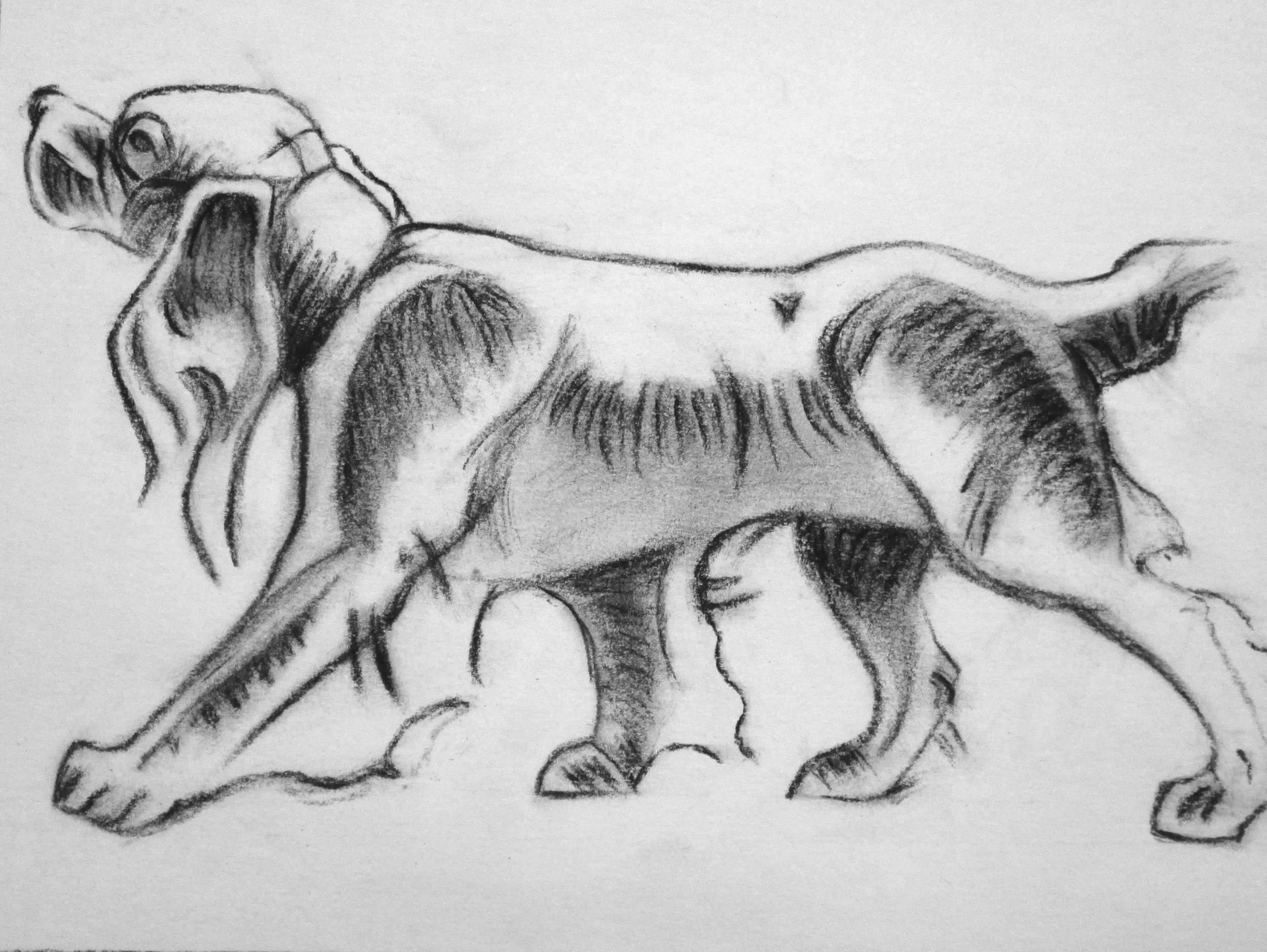
Drawing & Painting Classes
Methodology
Using a step-by-step method (the simple to the complex), students understand what is needed in order to draw successfully. The techniques taught to students gradually assists in helping them become more independent as they move through the learning process. These techniques are traditional and classical in approach. Depending upon students’ manipulative skills, dexterity, and artistic experience, their program will be designed to their level of ability.
Morgan, Age 5, Pastel
Materials
To achieve quality results, proper materials play an important role in students’ training. Students are taught not only what to use, but also how to use and care for their materials. To get students accustomed to working with correct supplies, the beginning drawing kit is composed of materials that have been chosen due to their quality.
Breakdowns
For students ages 5-6
For students ages 9 and up
Techniques & Mediums
Drawing
When you teach the visual arts, you are really developing students’ ability to “see” relationships. In other words, to measure accurately one thing to another. They are taught how to measure with the eye, how to break something into its parts, and put it back together again to make a whole picture.
Students will be introduced to a variety of drawing mediums at this level of instruction. The basic introductory format is composed of three essential components of visual art:
Form (shape)
Size (mass, scale)
Placement (relationships)
Tone
No realistic forms are going to be three-dimensional without tone. Students learn how to achieve variations of tone:
Light
Medium
Dark
Darkest-Dark
Lightest-Light
Emily, Age 15, Charcoal
Lily, Age 14, Pastel
Pastels
Students are introduced to “painting” by learning how to use pastels. Soft pastels and oil pastels are applied to students’ completed drawings in thin layers creating shadows and highlights in order to create three-dimensional images. Proper application of each medium is taught so that students understand the importance of working from light to dark, blending one color seamlessly into the next. Emphasis is placed on neatness in order to keep colors true.
Painting
Painting is drawing with a brush. The better students draw, the better they will paint. We teach three parts about color: hue, value, and purity.
Students are taught sequences and methods of procedure:
Brush and paint care
Arrangement of colors on a palette
Mixing specific hues
Paint application
Brush techniques
Clean-up
Josiah Yu, Age 11, Watercolor
Watercolor
Watercolor painting is introduced at students’ current drawing levels, allowing them to learn how to mix colors using the color wheel as a guide. Students learn how to use primary colors to mix secondary colors and how to match the variations of value in order to build color gradually on their painting. Students are taught proper set-up and clean-up procedure as well as consecutive steps needed to execute a painting.
Acrylic
Students will learn acrylic painting in similar steps as watercolor painting. Proper set-up and care of materials are essential in order for a student to excel at this level. Students will learn how to mix their colors in order to match the image and how to achieve three-dimensions by layering and blending values gradually on their canvas. Acrylic paint is applied thin to thick giving students a strong basis that will carry into oil painting.
These are simple steps that form a complex activity. Thus, painting is quite an undertaking; teaching tenacity as well as technique. Teaching specific terminology – this activity consists of its own terms and skills to be learned:
Dry brush
Wash
Glazing
Mahima Girish, Age 16, Oil paint
Maya, Age16, Oil
Oils
Students in advanced realism will be introduced to oil painting by means of glazing over an acrylic base. Students will learn the difference between the application and care of oil painting and previously mastered acrylic painting. Students at this level will have gained patience and advanced skills in mixing and manipulating paint which will allow them more freedom and ease when working. Students are taught to utilize various mediums in order to quicken the dry time or create various surface variation. Students will explore how thin layers of colored glazes can easily be blended to create greater three-dimensionality and realism in their work.










